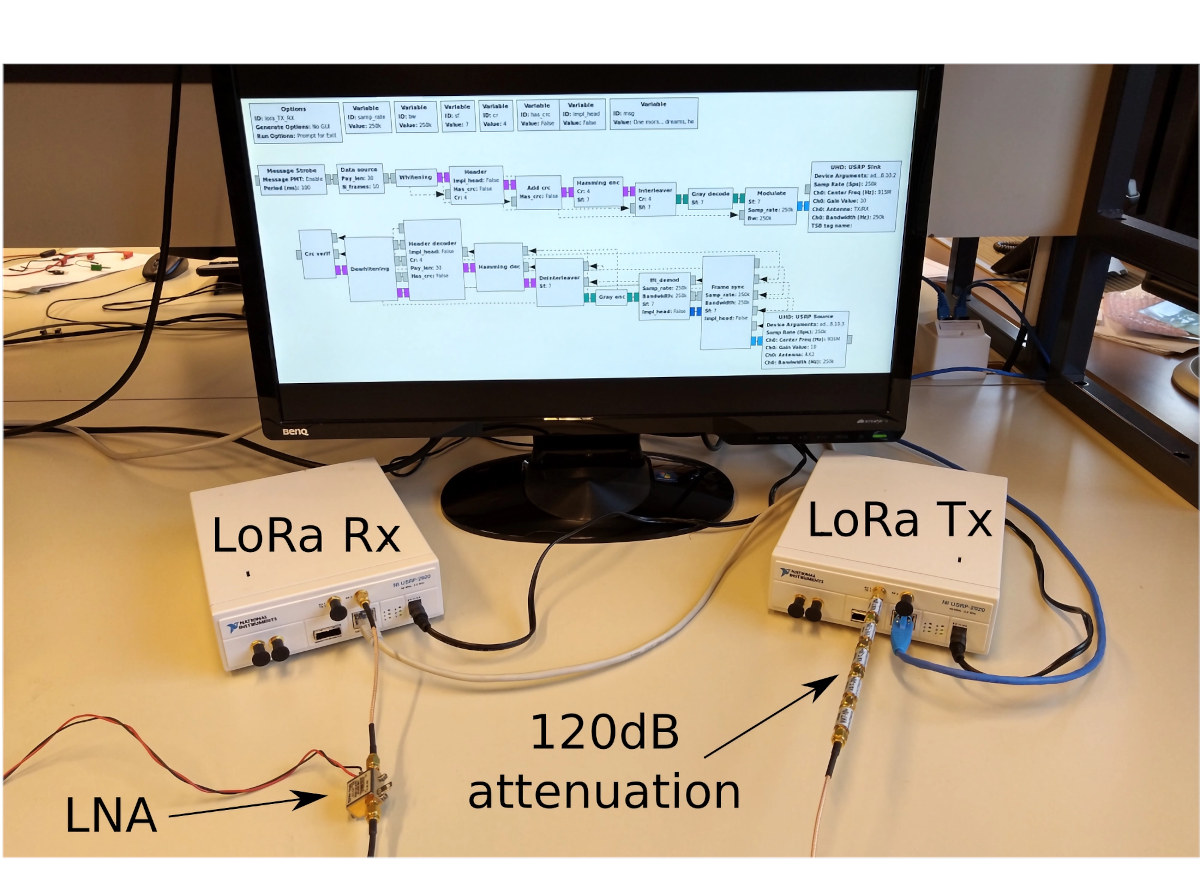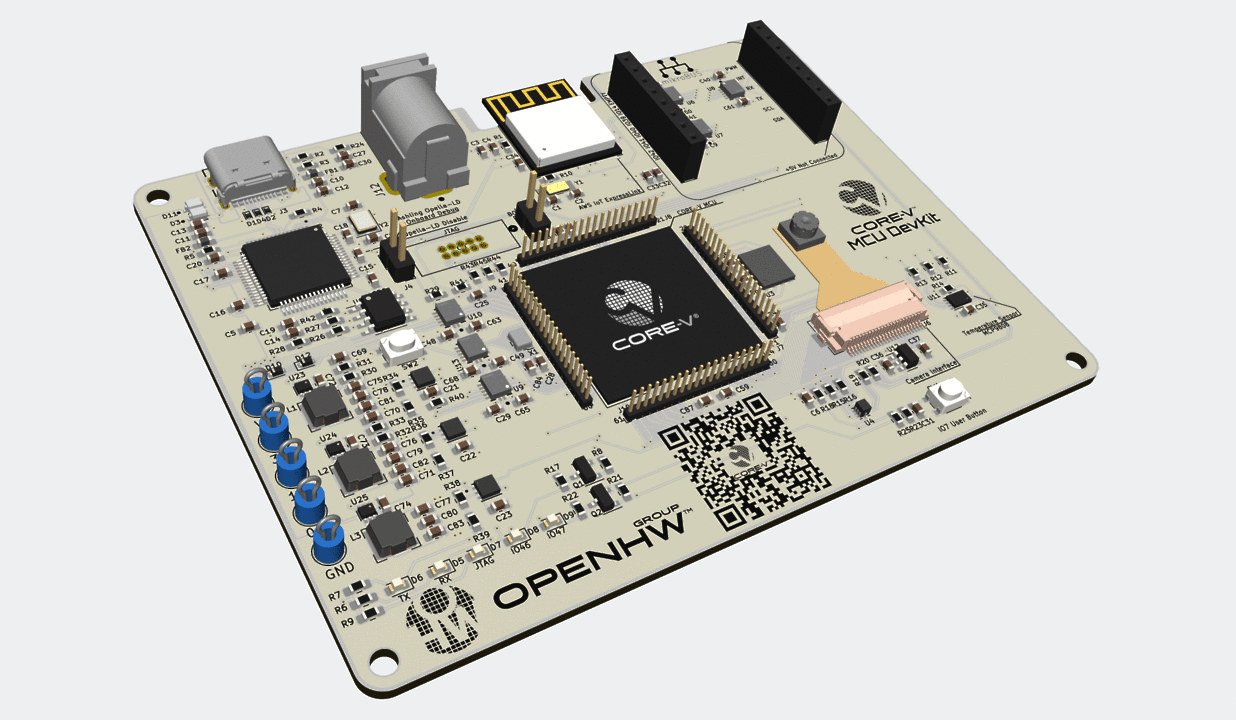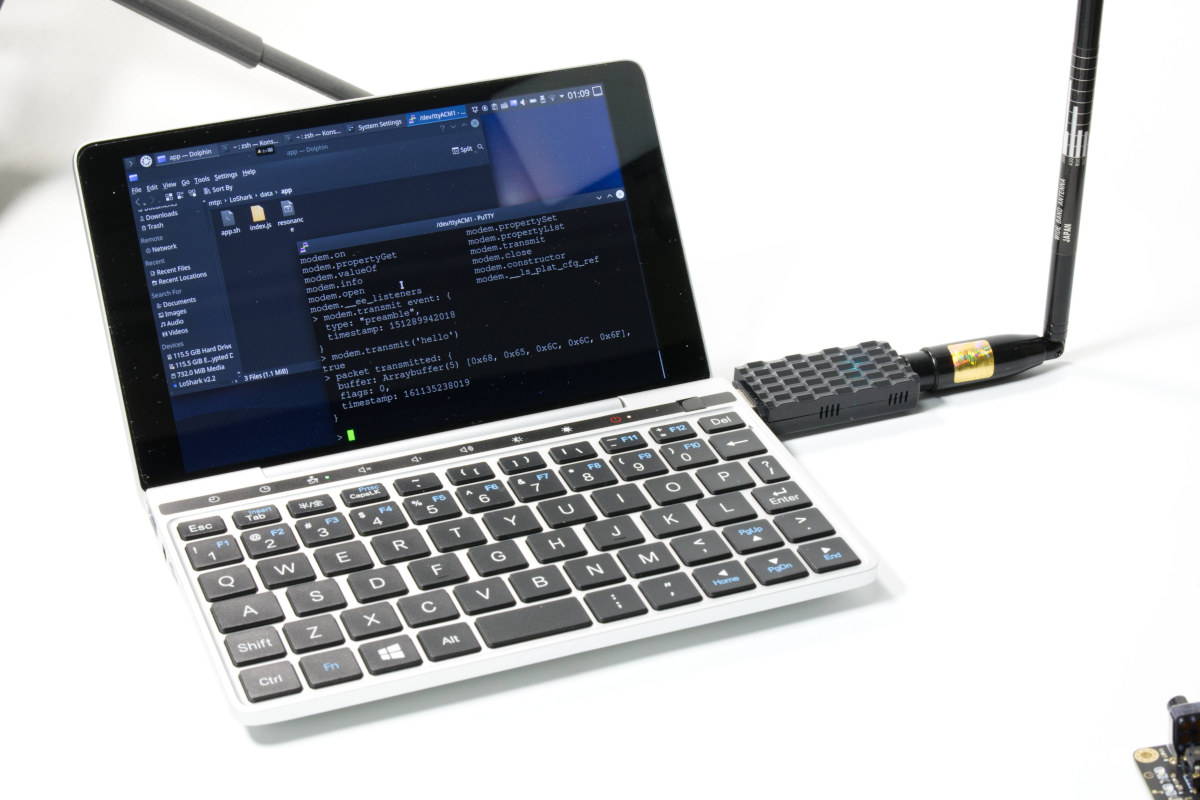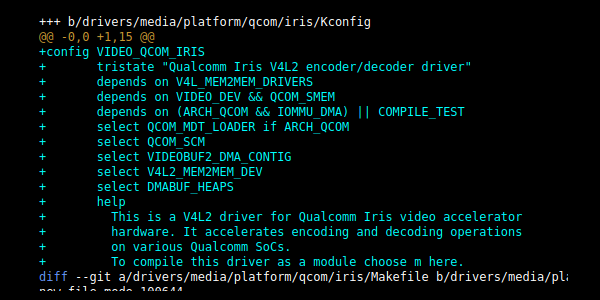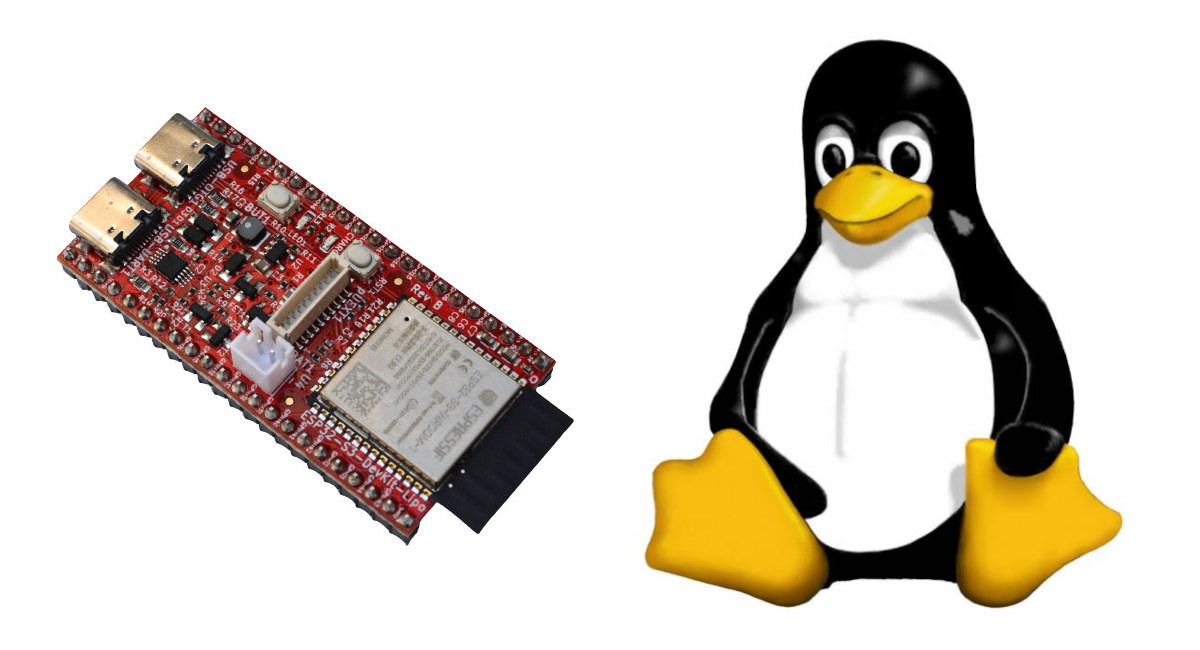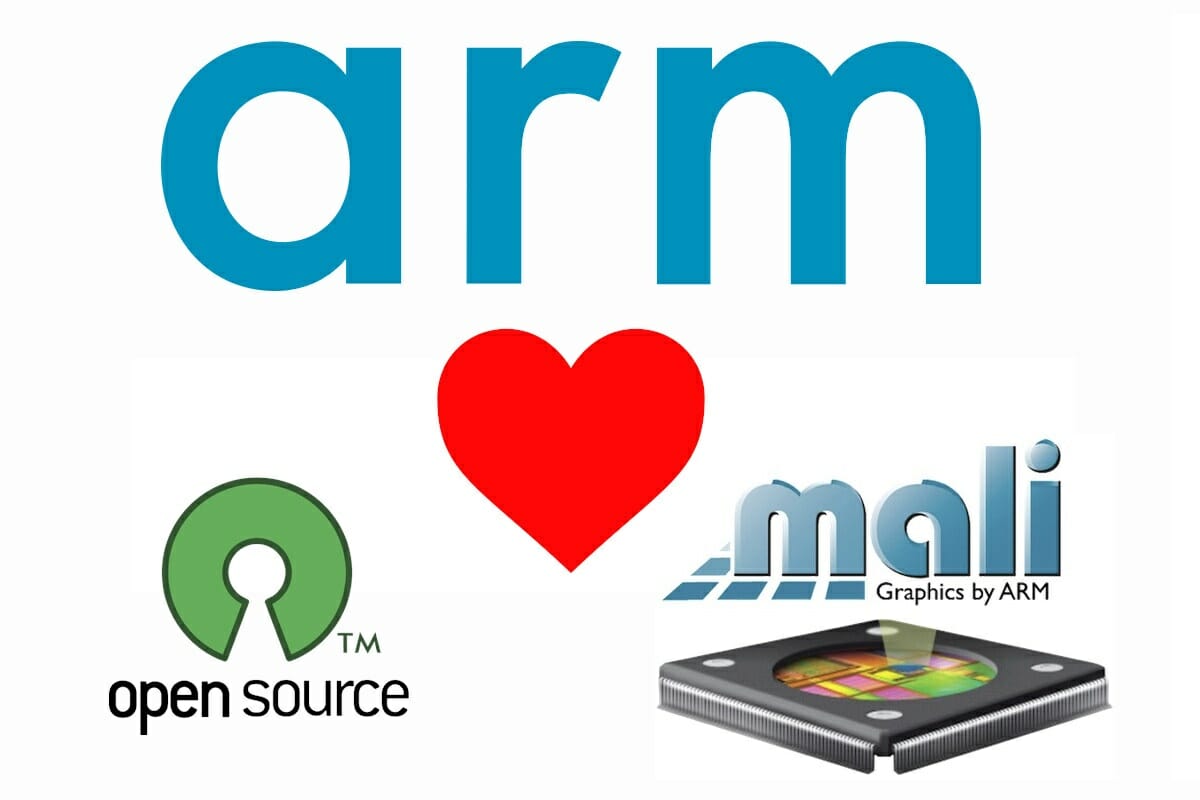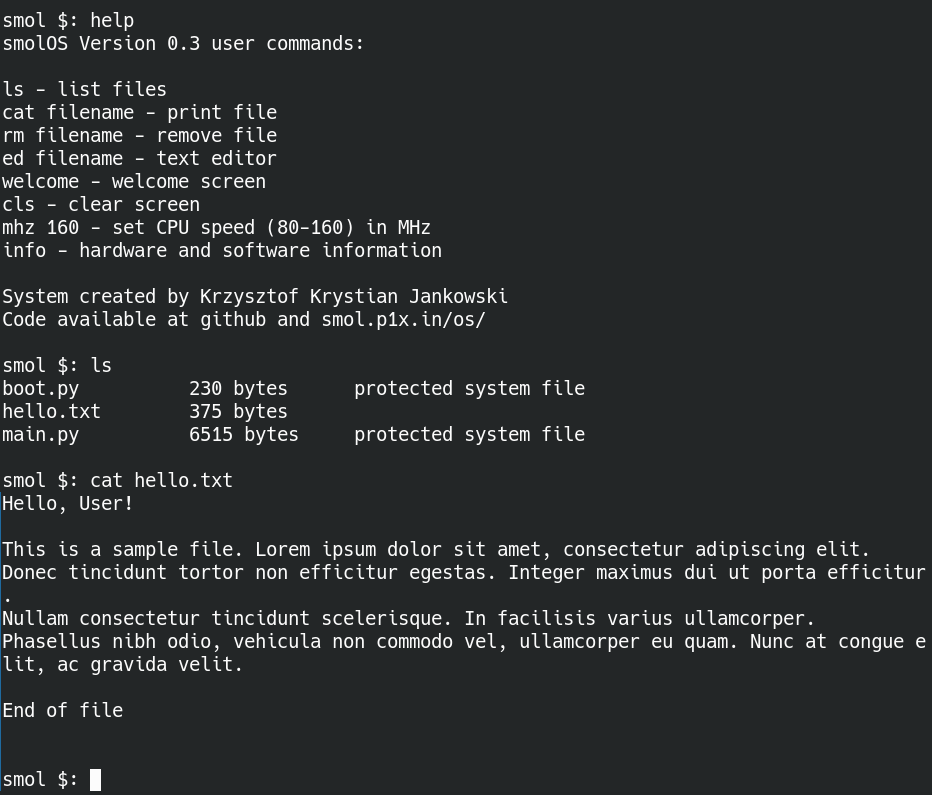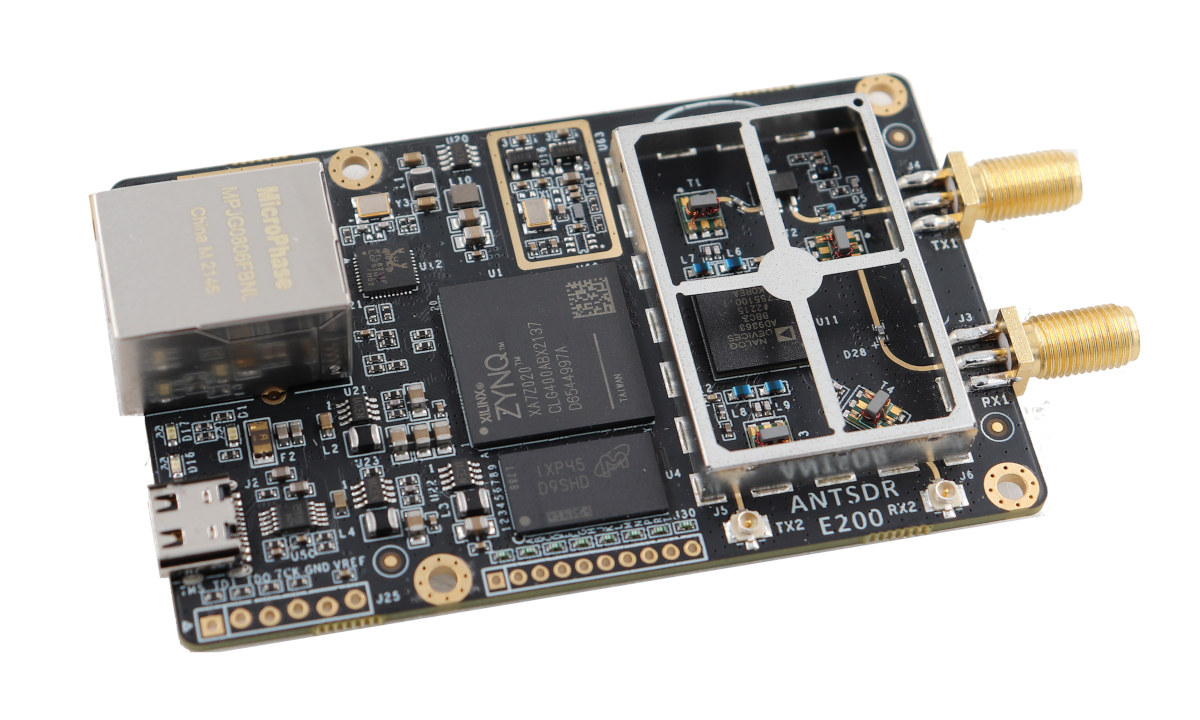The physical layer of the LoRa (LoRa PHY) is a proprietary standard owned by Semtech and people have been trying to reverse-engineer the LoRa standard for years with projects such as GR-LoRa, and over the year various people have taken over the works and new projects have come with the latest one being the gr-lora_sdr GNU Radio software-defined radio (SDR) implementation of a LoRa transceiver. The project has been conducted in collaboration with the Telecommunication Circuits Laboratory of the EPFL (École Polytechnique Fédérale de Lausanne) in Switzerland, and gr-lora_sdr is available as a module for GNU Radio 3.10 with both Tx and Rx implemented so it can be used with hardware compatible with GNU Radio that works in the ISM bands for LoRa (e.g. 433 MHz, 868 MHz, 915 MHz). Highlights of the gr-lora_sdr project: Sends and receives LoRa packets between USRP-USRP and USRP-commercial LoRa transceiver (tested with Adafruit Feather […]
CORE-V MCU Devkit features open-source 32-bit RISC-V core, Amazon AWS IoT connectivity, Mikrobus expansion, VGA camera
The CORE-V MCU DevKit is an open-source hardware board based on the CORE-V microcontroller featuring the open-source OpenHW CV32E40P0 RISC-V MCU core and a Quicklogic ArticPro 2 eFPGA. The board offers wireless connectivity to Amazon AWS through an ESP32-C3 AWS IoT ExpressLink module, a MikroBus connector for expansion, a VGA camera module, JTAG and serial debugging, as well as a temperature sensor and a few buttons. The development kit can be powered by its USB Type-C port (5V) or a DC jack taking 5V to 18V DC. CORE-V MCU devkit specifications: Microcontroller – CORE-V MCU OpenHW CV32E40P RISC-V processor core (in-order 4-stage RISC-V RV32IMFCXpulp CPU based on RI5CY from PULP-Platform) with 512KB SRAM, boot ROM Quicklogic ArticPro 2 eFPGA Storage – 4MB QSPI flash Wireless – Espressif AWS IoT ExpressLink Module for AWS IoT cloud interconnect Camera – Himax HM01B0 ultra-low-power QVGA (320×240) CMOS image sensor as found in the […]
Sudomaker LoShark L1 LoRa USB dongle runs Linux on Ingenic X1501 MIPS processor
Sudomaker LoShark L1 is a USB dongle with Semtech SX1262/SX1268 LoRa transceiver and a Linux-capable Ingenic X1501 MIPS processor with 8MB on-chip memory that serves as a LoRa debug tool that can use a JavaScript interface to access to all SX126x chip registers. The LoShark L1 USB key offers both LoRa connectivity and debugging capabilities such as packet capture (hence the reference to WireShark) and can operate either independently (standalone) or in conjunction with a PC as shown below with a mini laptop. LoShark L1 specifications: SoC – Ingenic X1501 MIPS processor @ 1 GHz with 8MB DRAM, 2200+ CoreMark, Memory – Optional 8MB PSRAM (Lyontek LY68L6400SLIT) Storage – 4GB MLC or 256 MB SLC NAND flash Wireless connectivity HJSIP HJ-68LR LoRa module based on Semtech SX1262/SX1268 with TCXO Support for 433 MHz, 868 MHz, and 915 MHz bands SMA-F antenna connector USB – 1x USB Type-A male […]
Qualcomm Iris video decoder & encoder gets Linux V4L2 driver
Qualcomm engineer Vikash Garodia has just pushed a commit to add “Qualcomm Iris V4L2 encoder/decoder driver” to mainline Linux enabling support for H.264, H.265, and VP9 decoding, H.264 and H.265 encoding, as well as M2M and STREAMING capabilities. The Adreno GPUs found in Qualcomm SoC have been supported by the open-source Freedreno driver for several years, but this was not the case with the IP block taking care of hardware video encoding and decoding. The latest patchset addresses this issue for “Qualcomm’s new video acceleration hardware architecture”, meaning it might not work for older Qualcomm processors. The list of features implemented in the Iris V4L2 encoder/decoder driver: Centralized resource and memory management. Centralized management of core and instance states. Defines platform-specific capabilities and features providing a single point of control to enable/disable a given feature depending on specific platform capabilities. Handles hardware interdependent configurations. Handles multiple complex video scenarios involving […]
12 Euros ESP32-S3-DevKit-LiPo board runs Linux 6.3
Olimex ESP32-S3-DevKit-LiPo is a new open-source hardware ESP32-S3 board with 8MB flash, 8MB PSRAM, as well as LiPo battery and JTAG support that can run Linux 6.3, or the more traditional Arduino or MicroPython firmware. The board is based on the ESP32-S3-WROOM-1-N8R8 module, features two USB-C ports for power, programming, and JTAG debugging, plenty of expansion with two rows of I/Os plus a pUEXT connector, Reset and Boot buttons, and a couple of LEDs. ESP32-S3-DevKit-LiPo specifications: Wireless module – Espressif ESP32-S3-WROOM-1-N8R8 with SoC – ESP32-S3 dual-core LX7 microprocessor @ up to 240 MHz with Vector extension for machine learning, WiFi 4 & Bluetooth 5 LE/Mesh Memory – 8MB OSPI PSRAM Storage – 8MB QSPI flash PCB antenna Dimensions – 25.5 x 18.0 x 3.1 mm USB 1x USB Type-C OTG port also used for JTAG/Serial 1x USB Type-C port for USB-serial programming and power Expansion 2x 22-pin GPIO headers pUEXT […]
Arm: “Panfrost is now the GPU driver for the Linux community”
Arm is now saying that “in effect, Panfrost is now the GPU driver for the Linux community” after having extended and expanded the collaboration with Collabora for the development of the open-source Panfrost driver for Arm Mali GPUs, following their first official collaboration in the fall of 2020. Arm goes even as far as to claim that “through the Arm and Collabora partnership, device manufacturers can confidently choose SoCs containing a Mali GPU regardless of the software operating system (OS) and graphics middleware… delivering a high-quality open-source Linux implementation which can be used in their products”. Collabora confirmed the new partnership saying Arm will be instrumental in getting Vulkan support in Panfrost alongside the existing OpenGL and OpenGL ES implementations. Going forward that means SBC vendors will have no excuse for not getting 3D graphics acceleration working on Linux with Panfrost when using an Arm SoC with a recent Mali […]
smolOS brings a Linux-like command line interface to ESP8266 microcontroller
smolOS (pronounced small OS) is an open-source, lightweight MicroPython program that implements a POSIX-style (Linux-like) command line interface for the ESP8266 WiFi microcontroller. Krzysztof Jankowski (w84death) designed smolOS to be easy to use, allowing the listing and removing of files and also including the smolEDitor which, as its name implies, is a simple text editor. There are currently eight commands with the familiar ls, cat, and rm, plus ed to launch the text editor, welcome to show the welcome screen above, cls to clear the screen, mhz to set the processor speed to 80 or 160 MHz, and info to display some hardware and software information. The project looks to be a work in progress, and the developer highlights the editor is at the alpha stage of development, so more features may be implemented over time by Krzysztof himself or by the community of developers. I also assume other microcontrollers […]
AntSDR E200 – Gigabit Ethernet connected SDR with Xilinx Zynq SoC FPGA supports 70 MHz – 6 GHz range (Crowdfunding)
We’ve just written about the uSDR M.2 SDR module on Crowd Supply, but it turns out the crowdfunding platform is hosting another SDR (Software-Defined Radio) project with the AntSDR E200 board equipped with an AMD Embedded Zynq 7020 SoC FPGA and an Analog Devices AD9363 or AD9361 RF chipset, and providing Gigabit Ethernet connectivity to the host. The board can operate in the 70 MHz – 6 GHz range with the AD9361 chipset, and the 325 MHz – 3.8 GHz range with the AD9363, supports 2×2 MIMO with two SMA antenna connectors and two U.FL connectors, and also features expansion interfaces for GPIOs. AntSDR E200 specifications: SoC FPGA – AMD Embedded/Xilinx Zynq 7020 dual-core Arm Cortex-A9 processor and FPGA with 85K logic cells, 4.9Mb Block RAM, 220 DSP slices System Memory – 512MB DDR3 Storage – 256 Mbit QSPI flash for firmware; microSD card slot (bottom side) RF Chipset – […]


